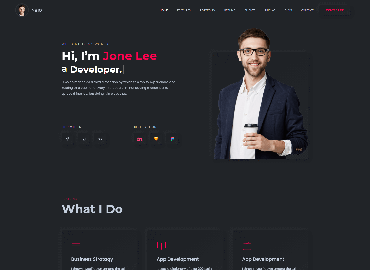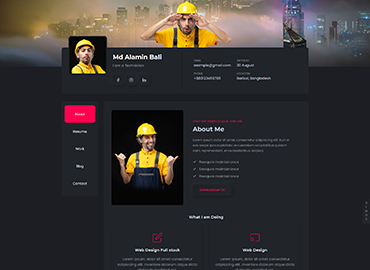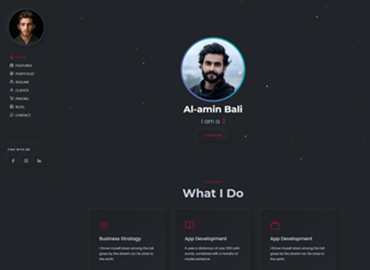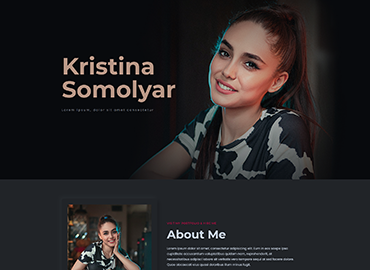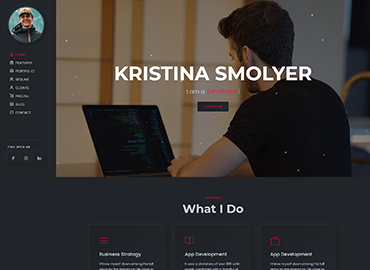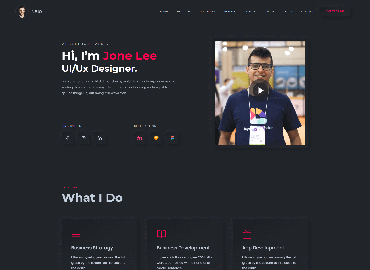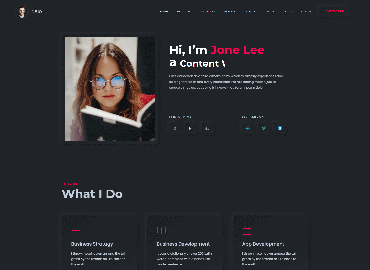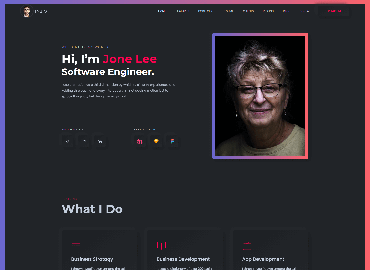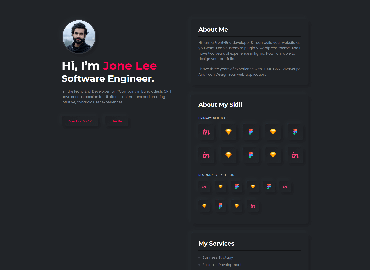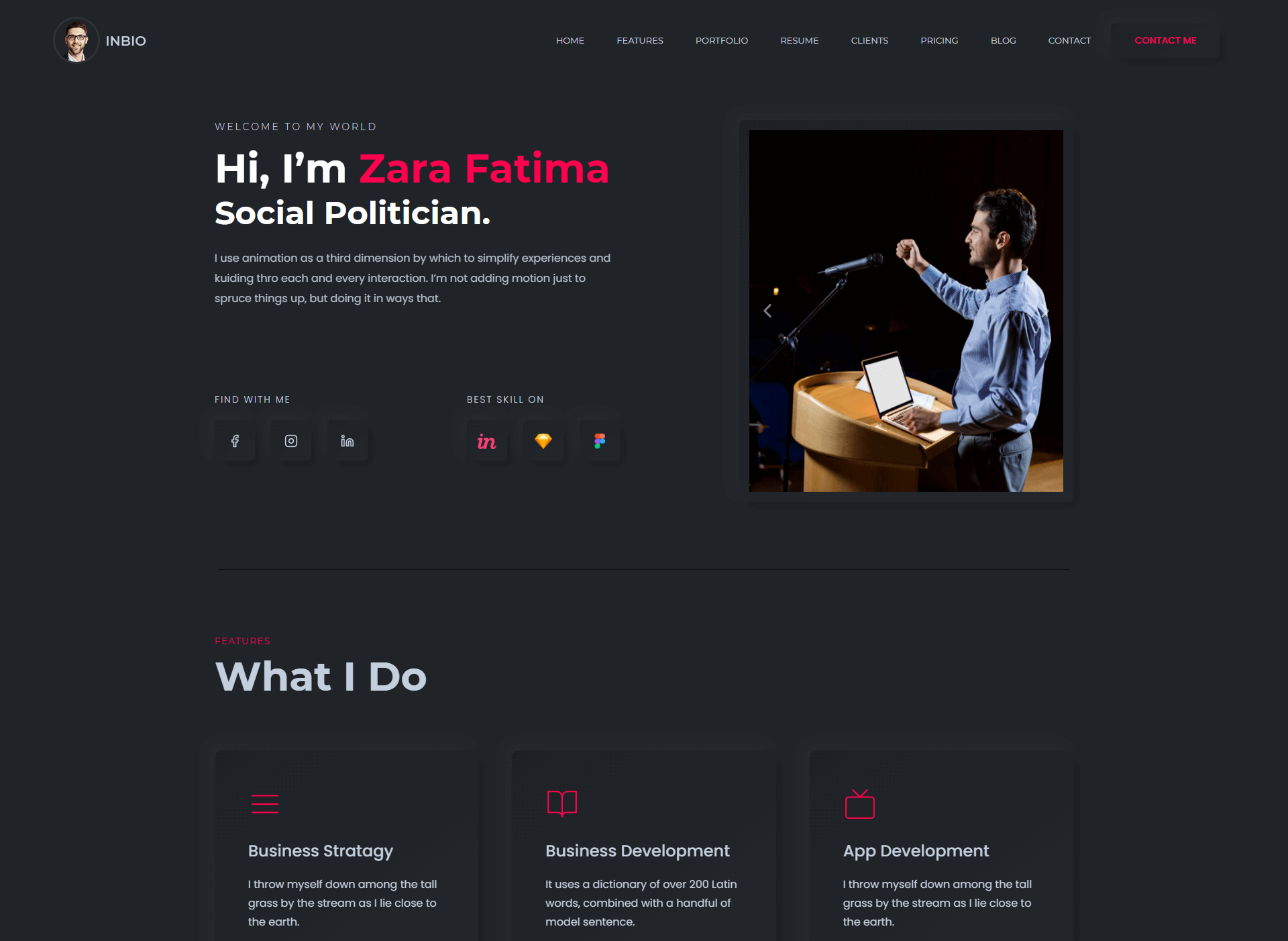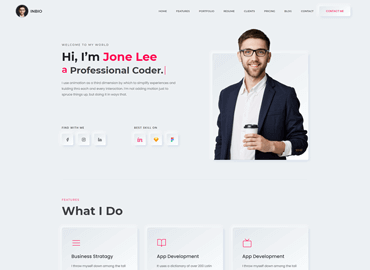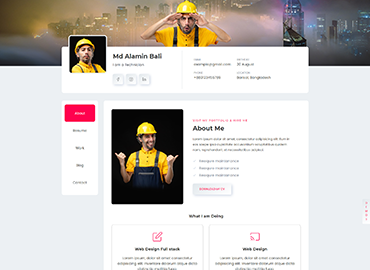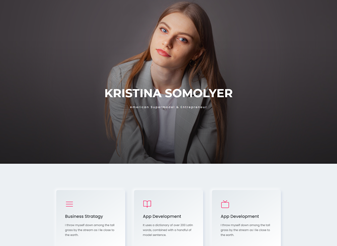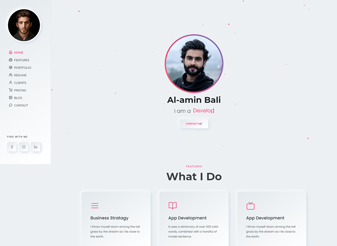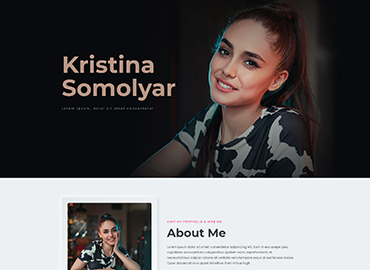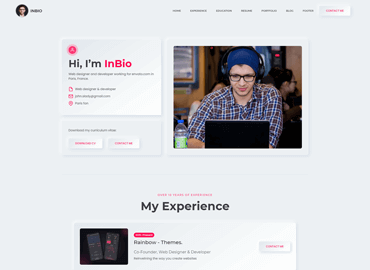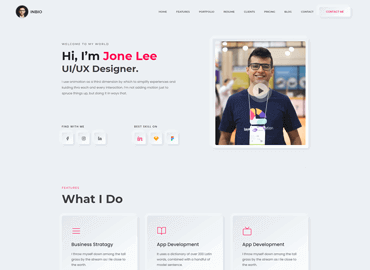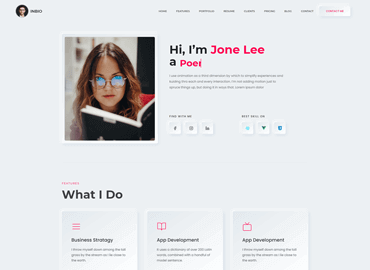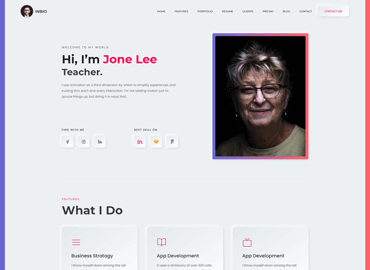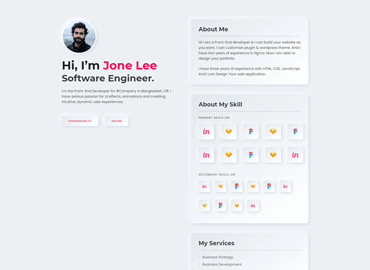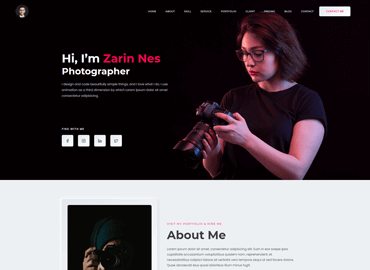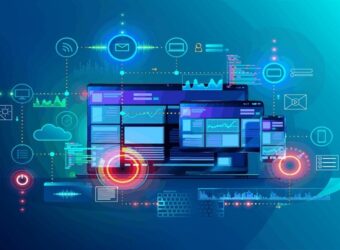Hi, I’m Michael
Web designer and developer working for envato.com in Paris, France.

My Experience

Software Develop.
Co-Founder
Microsoft Corporation

Web Design.
Founder, XYZ IT Company
Reinvetning the way you create websites

Teacher and Developer
SuperKing LTD
Sr. Software Engineer
Education

BSc in Computer Science
University of DVI
New Haven, CT ‧ Private, non-profit

AS - Science & Information
SuperKing College
Los Angeles, CA 90095, United States

Secondary School Education
Kingstar Secondary School
New Haven, CT ‧ Private, non-profit
My Resume
Education Quality
BSc in Computer Science
University of DVI (2006 - 2010)The training provided by universities in order to prepare people to work in various sectors of the economy or areas of culture.
AS - Science & Information
SuperKing College (2001 - 2005)Higher education is tertiary education leading to award of an academic degree. Higher education, also called post-secondary education.
Secondary School Education
Kingstar Secondary School (1998 - 2000)Secondary education or post-primary education covers two phases on the International Standard Classification of Education scale.
Job Experience
Sr. Software Engineer
Google Out Tech - (2017 - Present)Google’s hiring process is an important part of our culture. Googlers care deeply about their teams and the people who make them up.
Web Developer & Trainer
Apple Developer Team - (2012 - 2016)A popular destination with a growing number of highly qualified homegrown graduates, it's true that securing a role in Malaysia isn't easy.
Front-end Developer
Nike - (2020 - 2011)The India economy has grown strongly over recent years, having transformed itself from a producer and innovation-based economy.
Professional Skills
Preparing & Analysing pitch decks and financial models for startups
Hands-on experience in data mining in PE VC and M&A deal flow using Pitchbook, Tracxn and Crunchbase
Deals Sourcing by analysing startups using tools like LinkedIn Sales Navigator and LinkedIn Helper
Analysing credit rating reports for bank loans and debt funding
Business Valuations
Tuned in making powerpoint presentations and crunching numbers on Microsoft Exce
Job Experience
Sr. Software Engineer
Google Out Tech - (2017 - Present)Google’s hiring process is an important part of our culture. Googlers care deeply about their teams and the people who make them up.
Web Developer & Trainer
Apple Developer Team - (2012 - 2016)A popular destination with a growing number of highly qualified homegrown graduates, it's true that securing a role in Malaysia isn't easy.
Front-end Developer
Nike - (2020 - 2011)The India economy has grown strongly over recent years, having transformed itself from a producer and innovation-based economy.
Trainer Experience
Gym Instructor
Rainbow Gym Center (2015 - 2020)The training provided by universities in order to prepare people to work in various sectors of the economy or areas of culture.
Web Developer and Instructor
SuperKing College (2010 - 2014)Higher education is tertiary education leading to award of an academic degree. Higher education, also called post-secondary education.
School Teacher
Kingstar Secondary School (2001 - 2010)Secondary education or post-primary education covers two phases on the International Standard Classification of Education scale.
Company Experience
Personal Portfolio April Fools
University of DVI (1997 - 2001))The education should be very interactual. Ut tincidunt est ac dolor aliquam sodales. Phasellus sed mauris hendrerit, laoreet sem in, lobortis mauris hendrerit ante.
Examples Of Personal Portfolio
University of DVI (1997 - 2001))The education should be very interactual. Ut tincidunt est ac dolor aliquam sodales. Phasellus sed mauris hendrerit, laoreet sem in, lobortis mauris hendrerit ante.
Tips For Personal Portfolio
University of DVI (1997 - 2001))The education should be very interactual. Ut tincidunt est ac dolor aliquam sodales. Phasellus sed mauris hendrerit, laoreet sem in, lobortis mauris hendrerit ante.
Job Experience
Personal Portfolio April Fools
University of DVI (1997 - 2001))The education should be very interactual. Ut tincidunt est ac dolor aliquam sodales. Phasellus sed mauris hendrerit, laoreet sem in, lobortis mauris hendrerit ante.
Examples Of Personal Portfolio
University of DVI (1997 - 2001))The education should be very interactual. Ut tincidunt est ac dolor aliquam sodales. Phasellus sed mauris hendrerit, laoreet sem in, lobortis mauris hendrerit ante.
Tips For Personal Portfolio
University of DVI (1997 - 2001))The education should be very interactual. Ut tincidunt est ac dolor aliquam sodales. Phasellus sed mauris hendrerit, laoreet sem in, lobortis mauris hendrerit ante.
My Portfolio
My Blog
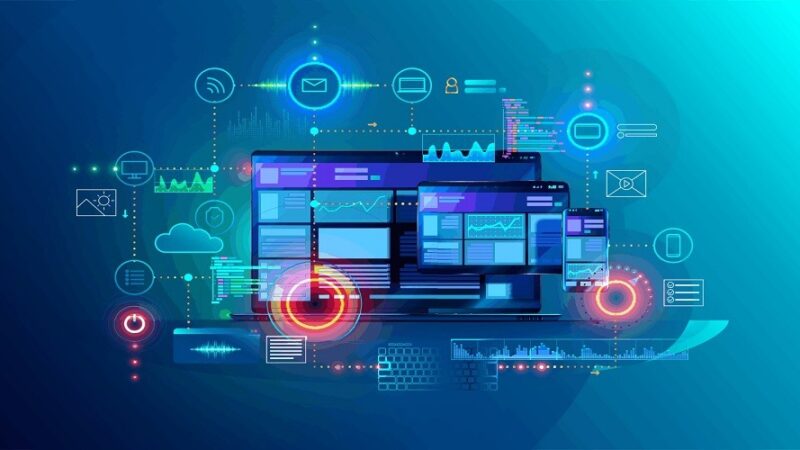
The unstoppable Web 3.0 – Are we witnessing a lifetime transition?
Imagine you want to select new window curtains for your new apartment. Having no idea about curtains, you search the Facebook pages of your friends who have similar tastes as yours. After getting a little idea about your preferred style, you surf the web for different designs of curtains to select from. Being shortlisted some curtains out, you compare their prices online and order 2 of them. As soon as they arrive, you video call your parents and friends and take their advice on which one looks better on your wall. You keep the better curtain and return the other one. That was so effortless. But does effortless mean safe? Unless you find out that the social media website, your phone, your browser, your search engine, the video-calling app, and the e-commerce app all know about your favourite designs, the fashion trends you follow, your spending patterns, the price bracket you fall in, and the important people in your life.
Welcome to the Dark side of the MAANG era. But good news! We got a solution – Web 3.0! While the move from Web 2.0 to Web 3.0 will have little to no influence on end users, it will result in a revolutionary transformation on the backend. Web 3.0 Blockchain is the actual revolution that, after establishing itself as a significant Blockchain technology trend, has begun to unfurl in the nooks and crannies of the internet.

Since Tim Berners Lee’s introduction of the initial Web version in the 1990s in Switzerland, the modus operandi has experienced substantial modifications, particularly in terms of interaction and data utilization. From being a reading model to its current status of being both readable and writable, the www has been revolutionized. It is now time to enter the third phase of the growth of the internet, the phase in which actual power rests in the hands of the people.
To fully comprehend Web 3.0, it is necessary to first know about its predecessors, Web 1.0 and Web 2.0.
Web 1.0
It was the “readable” phase of the World Wide Web domain. Web users and websites interact very little in Web 1.0. At its core, Web 1.0 was an information gateway that provided users with passive information without encouraging collaboration.
Web 2.0
Web 2.0 proved to be a game-changer. It made it possible for people to interact with companies. The World Wide Web’s “writable” phase allowed users to freely communicate with one another, fostering increased engagement, better cooperation, and real-time information exchange.
Web 2.0 arrived with the advent of social media, which rendered the formerly passive web participatory. Brands and customers were given a voice, which they used to express themselves to the rest of the world. The age of total visibility and exposure had arrived.
However, as the big corporations understood that the enormous quantity of personal data at their disposal was the most costly asset, data hoarding began in the centralised servers of firms like Amazon, Facebook, and Google.
Internet users began surrendering their security in exchange for the ease of improved services, and before they knew it, their surfing patterns, identities, and online purchasing were being sold to the highest bidders with suspicious motivations.
This accumulation of data in the hands of digital conglomerates with money and connections quickly reveals their dark side. News about renowned brands selling and being reckless with our data began to circulate.
With the incidents gradually resulting in financial loss and identity theft, consumers began to shift their focus away from convenience and began to question the value of a quality that was leaving them vulnerable.
It was time to restore data’s power to end users. Decentralization was required.
Web 3.0
It is an open and fair network in which individuals can connect without fear of compromising their security or privacy. The web version will make the internet intelligent by combining the power of AI and Big Data. After the readable and writable phases, it is time for the “machine-readable” web to prove itself.
Web 3.0 is the period in which the web will be driven by Blockchain in order to become more human. Blockchain will revolutionise how data is gathered and managed throughout the internet. With the aid of AI and IoT, the technology will pull together all of the focused data and turn it into digital blocks that cannot be hacked or reproduced.

Features of Web 3.0
To understand the reason behind the buzz around Web 3.0, we got to take a look at the main features that distinguish it:-
1. Edge Computing
Web 3.0 is based on the advent of edge computing, which processes apps and data at the edge of the network on devices such as mobile phones, computers, and even appliances. Edge computing is about processing data closer to where it is created, allowing for faster and better processing rates.
2. The Semantic Web
The Semantic Web enhances web technologies’ capacities to produce, share, and connect content via search and analysis by interpreting the meaning of letters or words rather than codes or numbers.
3. Decentralization
A decentralised Data Mesh views data as a product and retains it in a peer-to-peer network. Users keep control of their data and digital assets and may safely use the internet without being traced.
4. Blockchain Technology
A blockchain is defined as “a distributed database that keeps a constantly increasing list of ordered entries, known as blocks.” Cryptography is used to connect these blocks. Each block contains the preceding block’s cryptographic hash, a timestamp, and transaction data. This forms a decentralised public digital ledger with transactions across multiple computers in such a way that the record cannot be modified retrospectively without affecting all following blocks and network consensus.” This prohibits corporates from dominating and exploiting personal user data.
5. Artificial Intelligence
Computers may grasp information on a human-like level by merging semantic skills with natural language processing, allowing them to give faster and more relevant results. As a result, they grow more intelligent and better meet the demands of consumers.
6. Ubiquity
Internet information and services are accessible at any time from any device, what they call interoperability. Web 2.0 is already widespread in many ways, but the proliferation of IoT devices will push it to new heights.
7. 3D Graphics
In the brand-new web world, immersive experiences are entwined into browsing experiences. Users can turn, rotate, zoom in, and otherwise manipulate graphics, which brings activities such as gaming, researching, and online shopping to a whole new level.
Why the buzz – The reason behind industry experts embracing Web 3.0
Web 3.0 technology will eventually enable users to take full control of their data. Because consumers will have complete data ownership, businesses will no longer be required to comply with cumbersome regulatory obligations. It will be the choice of clients to select how much personal information they are willing to disclose. It will not incentivise centralised platforms that retain control of their users’ data. The monopoly of tech giants will be shaken at the expense of power getting distributed among users. Moreover, with no central authority, entry and exit barriers for firms will reduce as a new business will be easily able to start transferring digital assets, even across borders. Yes. You got it right. The monopoly of Google and Microsoft is going to take a hit soon.
Finally, blockchain will ensure ever so safe transmission of data making it hard for hackers to get into due to the Web 3.0 tech stack and no centralized storage of data. Any activity will be traced at its source allowing an overall safer environment. This will lead to reduced chances of a data breach, enhanced transparency and as a result, build trust with the clients.

Source: Juniper Research
This is why almost all great investors are ready to place their bets on dApps(decentralized Applications), even though they are directly competing with the largest tech companies in the world. But aren’t all the features we discussed backend? An average internet user may have little or no effect if his data is being monitored or not. Then why are startups in this space generating sales? This is because they are successfully able to translate these advantages to the customers. 2 Web3 business models getting popular include:-
1. Income sharing
Splitting profits among all partners in a company to motivate them to develop new innovative products. Users in this model split earnings from another company. A traditional example might be a restaurant where the cashier distributes tips to all customers. In the context of Web 3.0, you could tip a coffee shop one dollar and split it among all the employees, and other actors in the coffee value chain with minimal transaction costs.
2. Token offerings
Initial Coin Offerings(ICOs) are a way for crypto companies to raise funds through the issue of coins or tokens. Just like IPOs fulfil the company’s fundraising requirements in exchange for the company’s stake, ICOs offer the same by accepting cryptocurrencies for the tokens issued. Companies work on the continuous funding model by distributing the tokens gradually rather than all at once. This creates a whole new token exchange market with similar features to the stock market. But if they are the same, why do we need ICOs? Because these tokens can be distributed by any dApps not being bound by regulations and standard procedures to go through before raising funds. In this way, small firms can also raise crowd capital, unlike in stock markets. This allows businesses to leverage the opportunity of having control over their funding requirements. In a way, greatly reduces barriers to entry for new firms.
Web 3.0 in the real world
The transition to Web3 has already begun. It is characterized by the spread of Decentralised Applications (dApps) that run on blockchain networks rather than centralised servers. Some industries where dApps are shown in the image below.
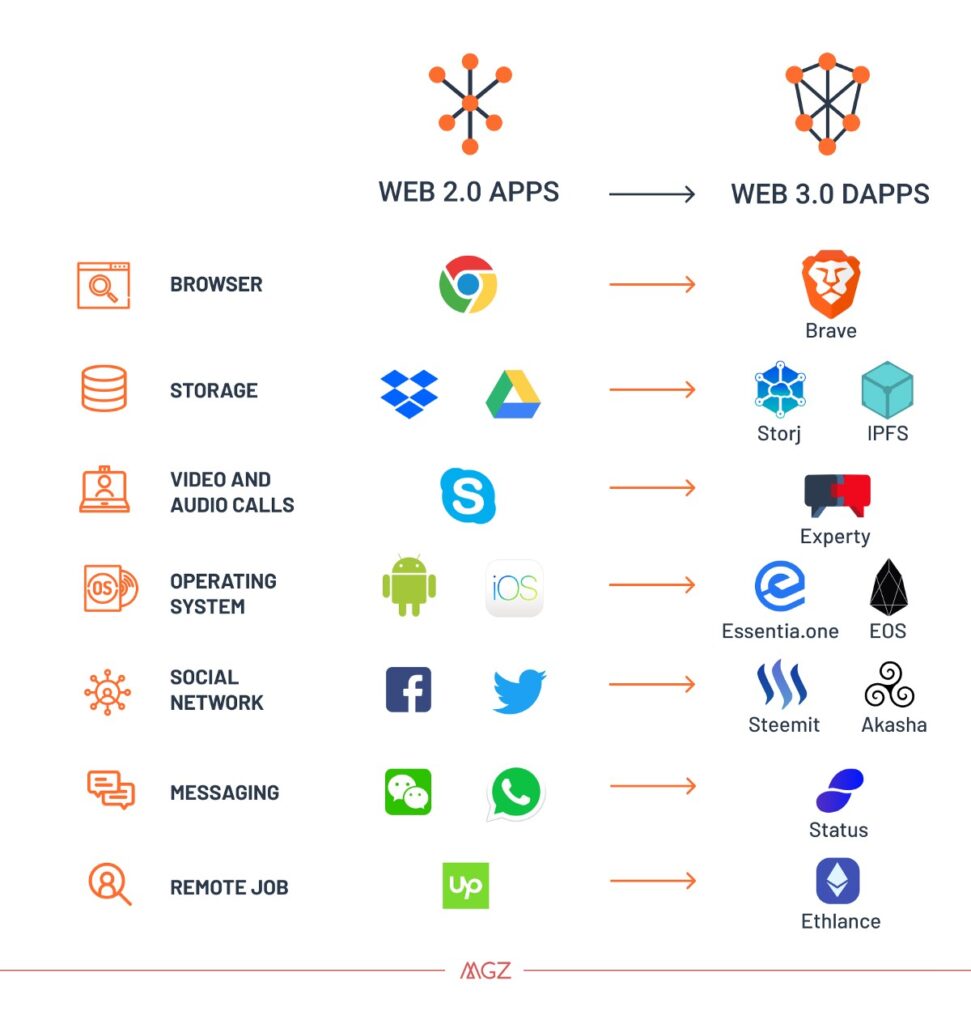
Credits: Medium
1. Browser
We all have seen Brave browser ads over YouTube sometime. It seemingly promises to get rid of ads on the browser, increase browsing speed and keep your data secured. You may have clicked on the ad once or noticed your colleague using the Brave browser. Imagining how I am predicting this? Because Brave reported that its ad campaign was a huge success with a click-through rate of 15.8%. This owes to how better of a product Brave is compared to Chrome. Web 3.0-enabled browsers make browning more
a) Fast,
b) Private,
c) Secure,
d) Cheap, and
e) Users get paid for selling their data
f) Example: Brave, Beaker
2. Storage
We generally keep our data on Google Drive or iCloud. Companies, on the other hand, have very different requirements since they want a lot more robust and highly scalable centralised system for storing data. The majority of data storage operations today risk data modification or selling data for advertising purposes.
There is no potential for data theft or hijacking in the Apps universe since there is no central server for storing data and the data is split up and transmitted over encrypted peer-to-peer connections.
Because no third party may access or manage customers’ data, distributed storage systems have an unparalleled advantage over standard cloud storage. Other benefits include high speed, excellent interoperability, and compatibility of IoT devices.
Example: Storj, Filecoin
3. Social Network
Unlike its web 2.0 equivalents, which are plagued by censorship, restrictions, surveillance, and data misuse, Web 3.0 social networks are based on the concepts of privacy, transparency, and user involvement in rewards and revenues.
Example: Akasha, Steemit
4. Remote Work
Remote job platforms can benefit from Web3 technology in a variety of ways, including charging cheaper rates, having no centralised management, and allowing cryptocurrency exchange between parties. This will make freelancing marketplaces efficient and ensure that workers are compensated fairly for their expertise.
Example: Ethlance, Atlas
Other sectors also use features that Web3 brings to the table to reduce costs, make transactions secure and increase transparency.
Final Remarks
My personal views on Web 3.0 is what the title of the blog reflects. Web 3.0 is structured in such a way that the tech giants will willingly or unwillingly have to adopt it or else these small players like Brave and Storj will soon eat up their market share. Web 3.0 comes with also no disadvantages making it inevitable that it’s going to be the new normal a few years ahead. The “data business” of large companies is at the stake of the many developers sitting in a quiet room creating yet another addition to the Web 3.0 framework to make it more secure and transparent. The user is going to emerge as the new hero after the lifetime transition.
Contact With Me

Nevine Acotanza
Chief Operating OfficerI am available for freelance work. Connect with me via and call in to my account.
Phone: +012 345 678 90 Email: admin@example.com